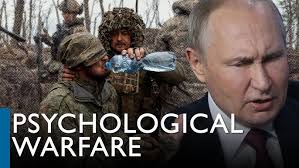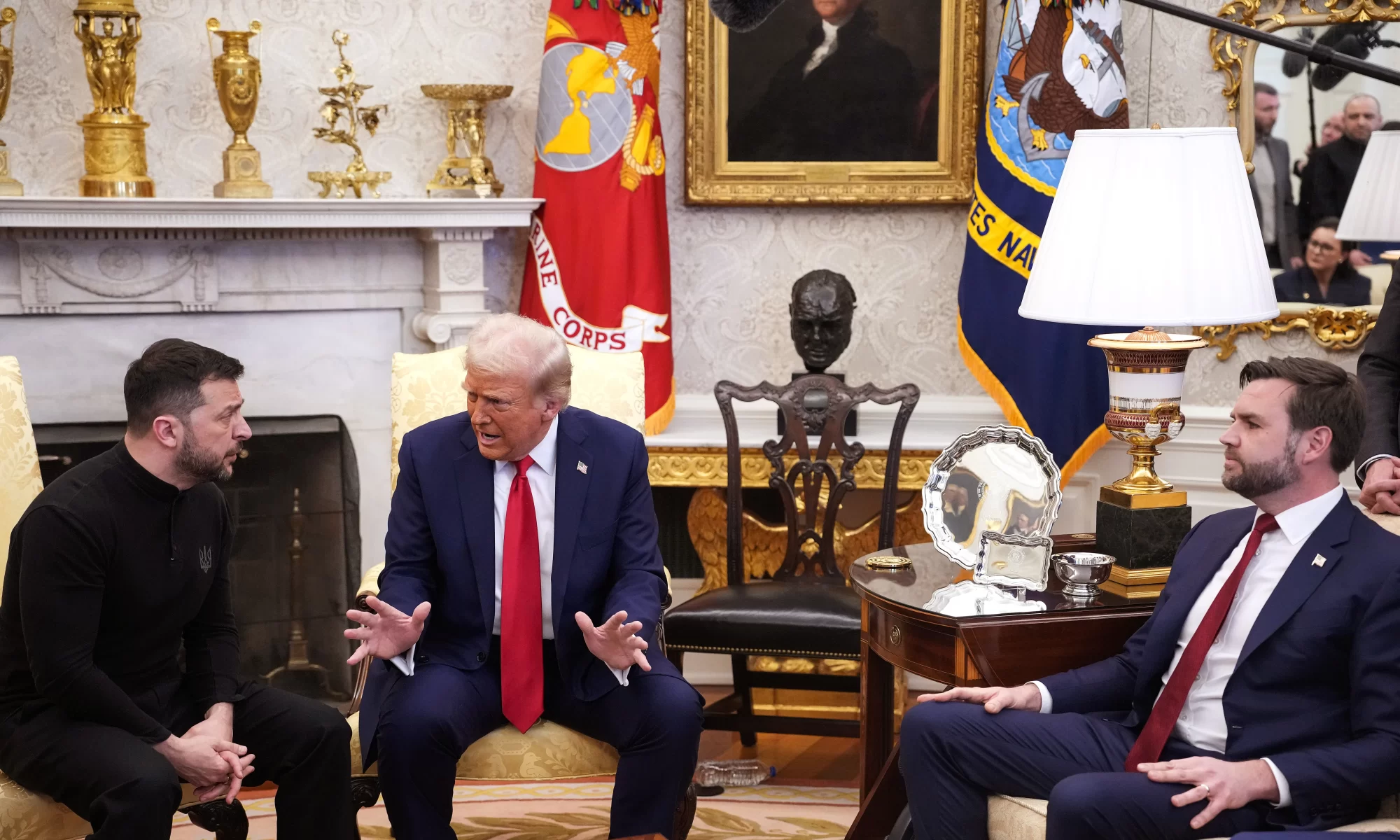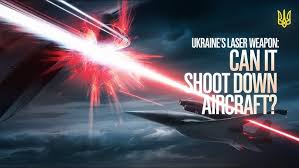My Article was published in the News Analytics Journal of Mar 25.
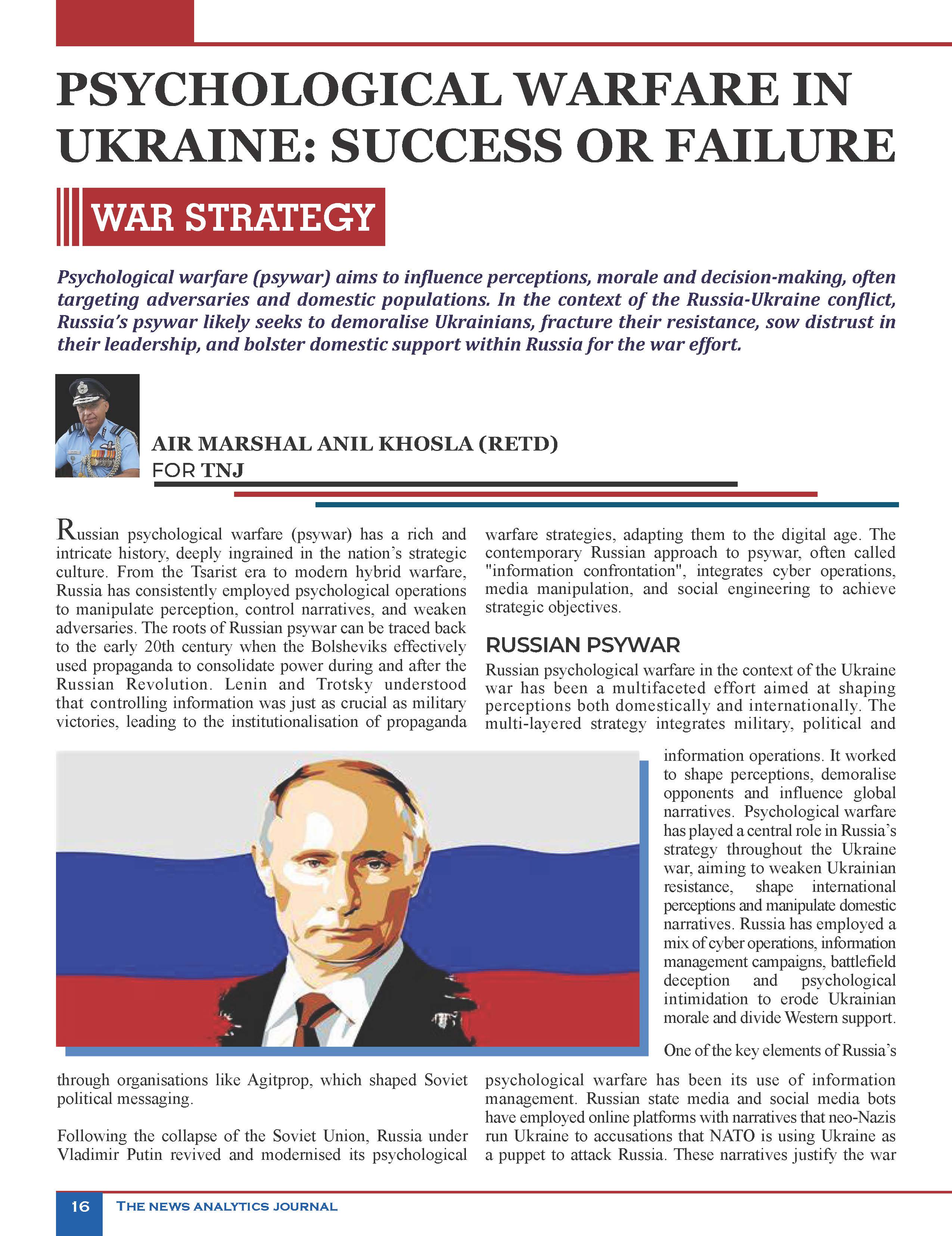
Psychological warfare (psywar) aims to influence perceptions, morale, and decision-making, often targeting adversaries and domestic populations. In the context of the Russia- Ukraine conflict, Russia’s psywar likely seeks to demoralise Ukrainians, fracture their resistance, sow distrust in their leadership, and bolster domestic support within Russia for the war effort. An evaluation of Russia’s psychological warfare (psywar) in Ukraine would need an assessment of its objectives, tactics, and measurable impacts based on available evidence and recent developments. This paper argues that while Russia’s psychological warfare has succeeded in shaping domestic narratives and straining Western unity, it has failed to break Ukrainian resistance or achieve a decisive strategic victory.
Historical Perspective of Russian Psychological Warfare
Russian psychological warfare (psywar) has a rich and intricate history, deeply ingrained in the nation’s strategic culture. From the Tsarist era to modern hybrid warfare, Russia has consistently employed psychological operations to manipulate perception, control narratives, and weaken adversaries. The roots of Russian psywar can be traced back to the early 20th century when the Bolsheviks effectively used propaganda to consolidate power during and after the Russian Revolution. Lenin and Trotsky understood that controlling information was just as crucial as military victories, leading to the institutionalisation of propaganda through organisations like Agitprop, which shaped Soviet political messaging.
During the early Soviet period, psywar techniques were used not only to suppress internal dissent but also to influence communist movements worldwide. The concept of “reflexive control,” developed in Soviet military thought, became a key element of Russian psywar, aiming to manipulate opponents into making decisions that ultimately benefit Russian interests. By the time of World War II, Soviet psychological operations had evolved into large-scale deception campaigns, including the use of maskirovka (military deception) to mislead Nazi Germany. Throughout the Cold War, the Soviet Union refined these methods, launching extensive “Active Measures” under the KGB to manage information and exploit societal divisions in Western nations.
Following the collapse of the Soviet Union, Russia, under Vladimir Putin, revived and modernised its psychological warfare strategies, adapting them to the digital age. The contemporary Russian approach to psywar, often called “information confrontation”, integrates cyber operations, media manipulation, and social engineering to achieve strategic objectives.
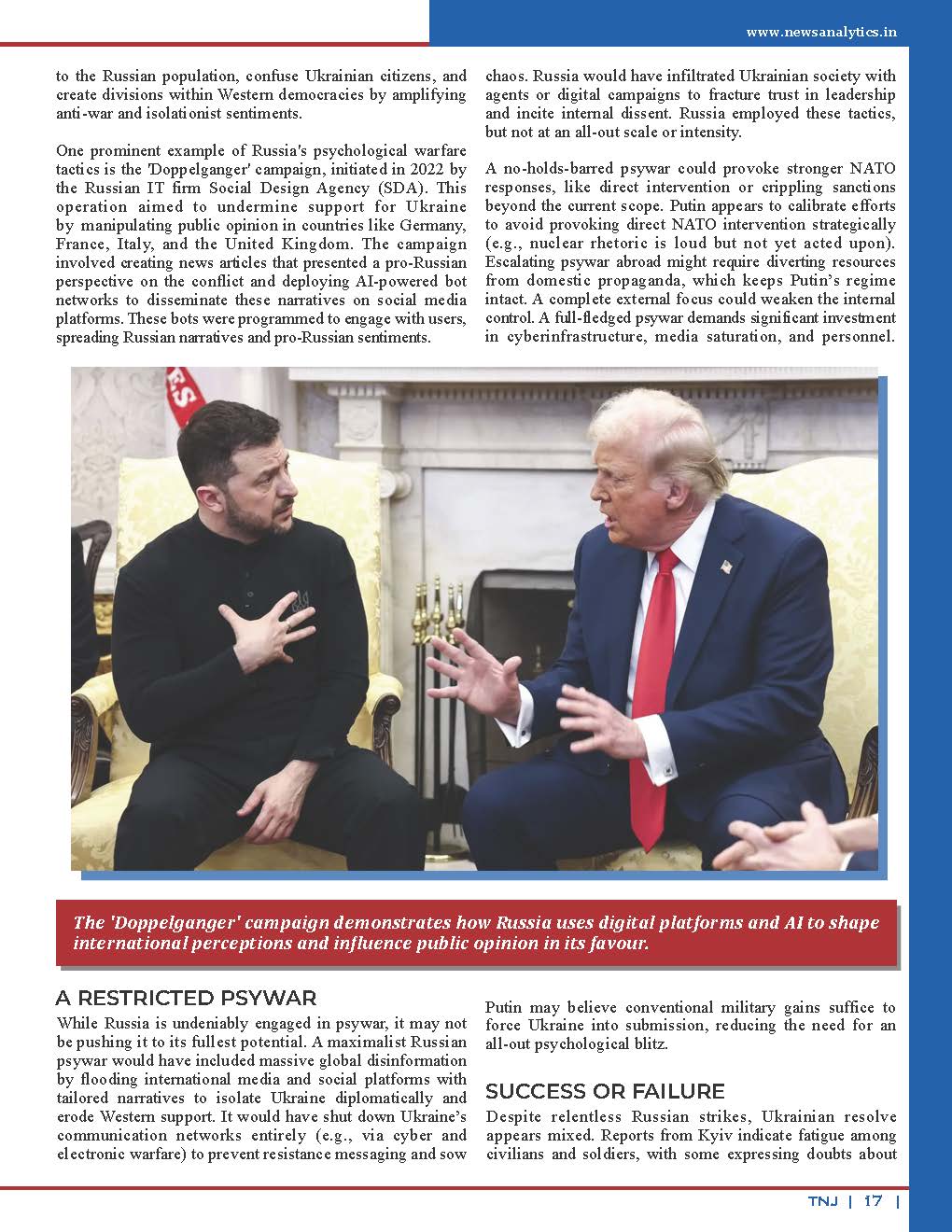
Russian Psywar during the Ukraine War
Russian psychological warfare in the context of the Ukraine war has been a multifaceted effort aimed at shaping perceptions both domestically and internationally. The multi-layered strategy integrates military, political, and information operations to shape perceptions, demoralise opponents, and influence global narratives. Psychological warfare has played a central role in Russia’s strategy throughout the Ukraine war, aiming to weaken Ukrainian resistance, shape international perceptions, and manipulate domestic narratives. Russia has employed a mix of cyber operations, information management campaigns, battlefield deception, and psychological intimidation to erode Ukrainian morale and divide Western support.
One of the key elements of Russia’s psychological warfare has been its use of information management. Russian state media and social media bots have employed online platforms with narratives that neo-Nazis run Ukraine to accusations that NATO is using Ukraine as a puppet to attack Russia. These narratives justify the war to the Russian population, confuse Ukrainian citizens, and create divisions within Western democracies by amplifying anti-war and isolationist sentiments. Russian narratives have also sought to exploit war fatigue in Western nations, emphasising that financial and military support for Ukraine is futile, expensive, or escalatory.
One prominent example of Russia’s psychological warfare tactics is the ‘Doppelganger’ campaign initiated in 2022 by the Russian IT firm Social Design Agency (SDA). This operation aimed to undermine support for Ukraine by manipulating public opinion in countries like Germany, France, Italy, and the United Kingdom. The campaign involved creating news articles that presented a pro-Russian perspective on the conflict and deploying AI-powered bot networks to disseminate these narratives on social media platforms. These bots were programmed to engage with users, spreading Russian narratives and pro-Russian sentiments. The ‘Doppelganger’ campaign demonstrates how Russia uses digital platforms and AI to shape international perceptions and influence public opinion in its favour.
Cyber warfare has also been a critical psychological tool. Russian cyber groups have often launched cyber attacks on Ukrainian government institutions, banks, and critical infrastructure. Beyond disabling systems, these attacks serve a psychological function, creating uncertainty, fear, and the impression that Ukraine’s leadership cannot protect its citizens. Russian cyber efforts extend beyond Ukraine, targeting Western institutions with cyber sabotage to weaken overall support for Kyiv.
All-Out or Restricted Psywar.
While Russia is undeniably engaged in psywar, it may not be pushing it to its fullest potential. A maximalist Russian psywar would have included massive global disinformation by flooding international media and social platforms with tailored narratives to isolate Ukraine diplomatically and erode Western support. It would have shut down Ukraine’s communication networks entirely (e.g., via cyber and electronic warfare) to prevent resistance messaging and sow chaos. Russia would have infiltrated Ukrainian society with agents or digital campaigns to fracture trust in leadership and incite internal dissent. Russia employed these tactics, but not at an all-out scale or intensity.
Russia isn’t indulging in a full-fledged war not because it’s unwilling but because strategy, resources, and context constrain it. The war’s hybrid nature means that psywar is a key component, but it’s subordinated to military and economic priorities rather than unleashed as a standalone juggernaut. Russia seems content with a steady, if not maximal, psychological pressure adequate to grind Ukraine down but not bold enough to gamble on total dominance.
Strategic Restraint or Compulsion. A no-holds-barred psywar could provoke stronger NATO responses, like direct intervention or crippling sanctions beyond the current scope. Putin appears to calibrate efforts to avoid provoking direct NATO intervention strategically (e.g., nuclear rhetoric is loud but not yet acted upon). Escalating psywar abroad might require diverting resources from domestic propaganda, which keeps Putin’s regime intact. A complete external focus could weaken the internal control. A full-fledged psywar demands significant investment in cyberinfrastructure, media saturation, and personnel. Putin may believe conventional military gains suffice to force Ukraine into submission, reducing the need for an all-out psychological blitz.
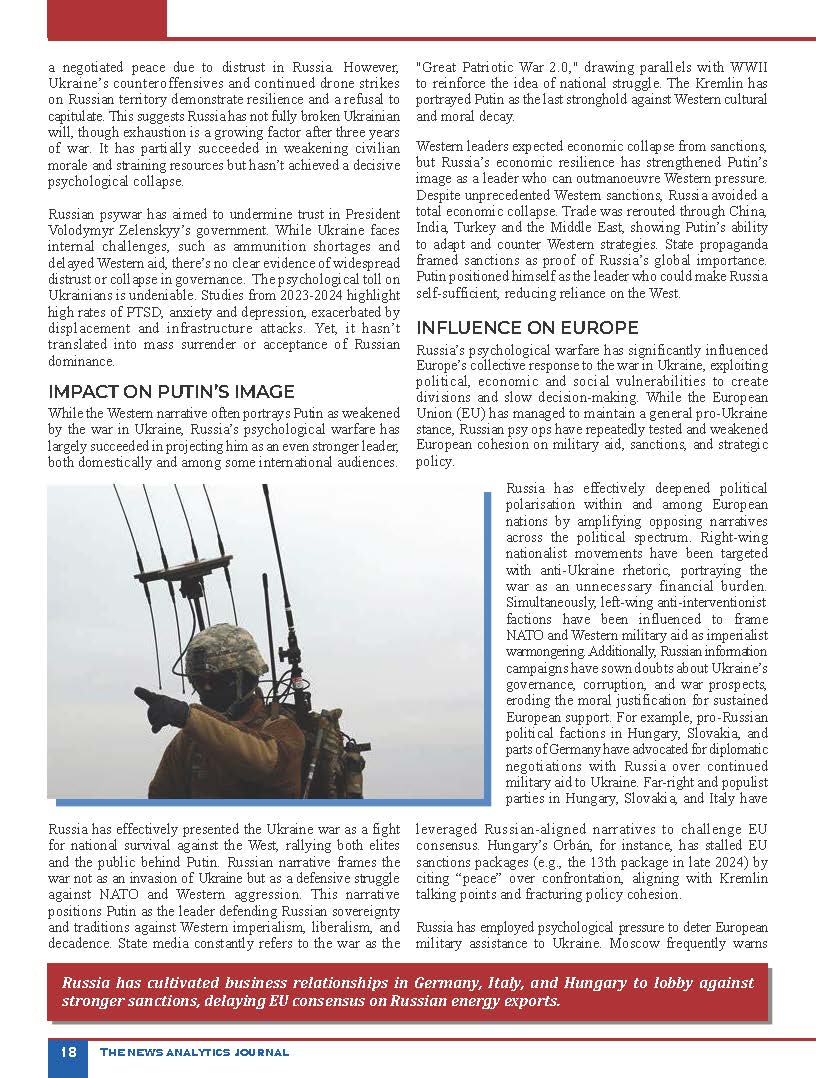
Success or Failure
Despite relentless Russian strikes, Ukrainian resolve appears mixed. Reports from Kyiv indicate fatigue among civilians and soldiers, with some expressing doubts about a negotiated peace due to distrust in Russia. However, Ukraine’s counteroffensives and continued drone strikes on Russian territory demonstrate resilience and a refusal to capitulate. This suggests Russia has not fully broken Ukrainian will, though exhaustion is a growing factor after three years of war. It has partially succeeded in weakening civilian morale and straining resources but hasn’t achieved a decisive psychological collapse.
Russian psywar has aimed to undermine trust in President Volodymyr Zelenskyy’s government. While Ukraine faces internal challenges, such as ammunition shortages and delayed Western aid, there’s no clear evidence of widespread distrust or collapse in governance. The psychological toll on Ukrainians is undeniable. Studies from 2023-2024 highlight high rates of PTSD, anxiety, and depression exacerbated by displacement and infrastructure attacks. Yet, it hasn’t translated into mass surrender or acceptance of Russian dominance.
Impact on Putin’s Image
While the Western narrative often portrays Putin as weakened by the war in Ukraine, Russia’s psychological warfare has succeeded mainly in projecting him as an even stronger leader, both domestically and among some international audiences.
Russia has effectively presented the Ukraine war as a fight for national survival against the West, rallying both elites and the public behind Putin. The Russian narrative frames the war not as an invasion of Ukraine but as a defensive struggle against NATO and Western aggression. This narrative positions Putin as the leader defending Russian sovereignty and traditions against Western imperialism, liberalism, and decadence. State media constantly refers to the war as the “Great Patriotic War 2.0,” drawing parallels with WWII to reinforce the idea of national struggle. The Kremlin has portrayed Putin as the last stronghold against Western cultural and moral decay. Messaging around traditional values, national pride, and resistance to globalisation strengthens his appeal among conservative Russians and foreign audiences in the Global South. The War has allowed Putin to eliminate political threats, tighten control over society, and silence opposition, reinforcing his image as an unchallenged ruler.
Western leaders expected economic collapse from sanctions, but Russia’s economic resilience has strengthened Putin’s image as a leader who can outmanoeuvre Western pressure. Despite unprecedented Western sanctions, Russia avoided a total economic collapse. Trade was rerouted through China, India, Turkey, and the Middle East, showing Putin’s ability to adapt and counter Western strategies. State propaganda framed sanctions as proof of Russia’s global importance. Putin positioned himself as the leader who could make Russia self-sufficient, reducing its reliance on the West.
Influence on Europe.
Russia’s psychological warfare has significantly influenced Europe’s collective response to the war in Ukraine, exploiting political, economic, and social vulnerabilities to create divisions and slow decision-making. While the European Union (EU) has managed to maintain a generally pro-Ukraine stance, Russian psy ops have repeatedly tested and weakened European cohesion on military aid, sanctions, and strategic policy.
Exploiting Political Divisions in Europe. Russia has effectively deepened political polarisation within and among European nations by amplifying opposing narratives across the political spectrum. Right-wing nationalist movements have been targeted with anti-Ukraine rhetoric, portraying the war as an unnecessary financial burden. Simultaneously, left-wing anti-interventionist factions have been influenced to frame NATO and Western military aid as imperialist warmongering. Additionally, Russian information campaigns have sown doubts about Ukraine’s governance, corruption, and war prospects, eroding the moral justification for sustained European support. For example, pro-Russian political factions in Hungary, Slovakia, and parts of Germany have advocated for diplomatic negotiations with Russia over continued military aid to Ukraine. This has complicated EU-wide decision-making, as unanimous support is often required for major foreign policy measures. Far-right and populist parties in Hungary, Slovakia, and Italy have leveraged Russian-aligned narratives to challenge the EU consensus. Hungary’s Orbán, for instance, has stalled EU sanction packages (e.g., the 13th package in late 2024) by citing “peace” over confrontation, aligning with Kremlin talking points and fracturing policy cohesion.
Weakening European Resolve on Military Aid. Russia has employed psychological pressure to deter European military assistance to Ukraine. Moscow frequently warns that Western arms supplies could escalate the conflict into a direct NATO-Russia war. President Vladimir Putin’s nuclear threats have had a chilling effect, particularly in Germany, where concerns over escalation delayed the provision of Leopard 2 tanks and later raised hesitations about supplying long-range Taurus missiles. Public opinion has also been a battleground for Russian influence. Moscow-backed media and social media campaigns have exaggerated the economic hardships caused by military aid, fuelling war fatigue. In Germany and France, protests calling for peace talks have been driven by narratives echoing Russian disinformation. In countries like France, polls from early 2025 show that 66% support EU aid to Ukraine, but 78% oppose troop deployment unless it is part of a peace deal. In Germany, scepticism about prolonged support grows amid economic pressures, with some voters echoing Russian claims of “war fatigue” amplified online. These divisions weaken the political will for a unified, robust response.
Economic Warfare and the Energy Weapon. Russia’s historical leverage over Europe’s energy supply has been a key psychological tool. The 2022 energy crisis, exacerbated by Russia’s gas cutoffs, heightened European economic fears. Russian psywar further exaggerated the risks of economic collapse, intensifying divisions within the EU. Under Prime Minister Viktor Orbán, Hungary has been a prominent example of how Russian energy influence can weaken EU unity. Orbán has repeatedly blocked or diluted Russian oil and gas sanctions, citing economic concerns. Additionally, Russia has cultivated business relationships in Germany, Italy, and Hungary to lobby against stronger sanctions, delaying EU consensus on measures such as price caps on Russian energy exports.
Encouraging Fractures in NATO and the EU. Russia has sought to drive a wedge between Europe and the United States by portraying Washington as manipulating the war for its strategic benefit. This narrative has traction among European leaders who advocate for greater strategic autonomy. French President Emmanuel Macron, for example, has suggested that Europe develop a more independent security framework rather than relying solely on NATO. Russian psyops have also exacerbated differences between Eastern and Western Europe. Poland and the Baltic states have been staunch supporters of Ukraine, pushing for aggressive military aid and sanctions. In contrast, France, Germany, and Italy have sometimes been more hesitant, leading to internal EU friction. Russia amplifies these divisions to slow collective decision-making, delaying much-needed aid to Ukraine.
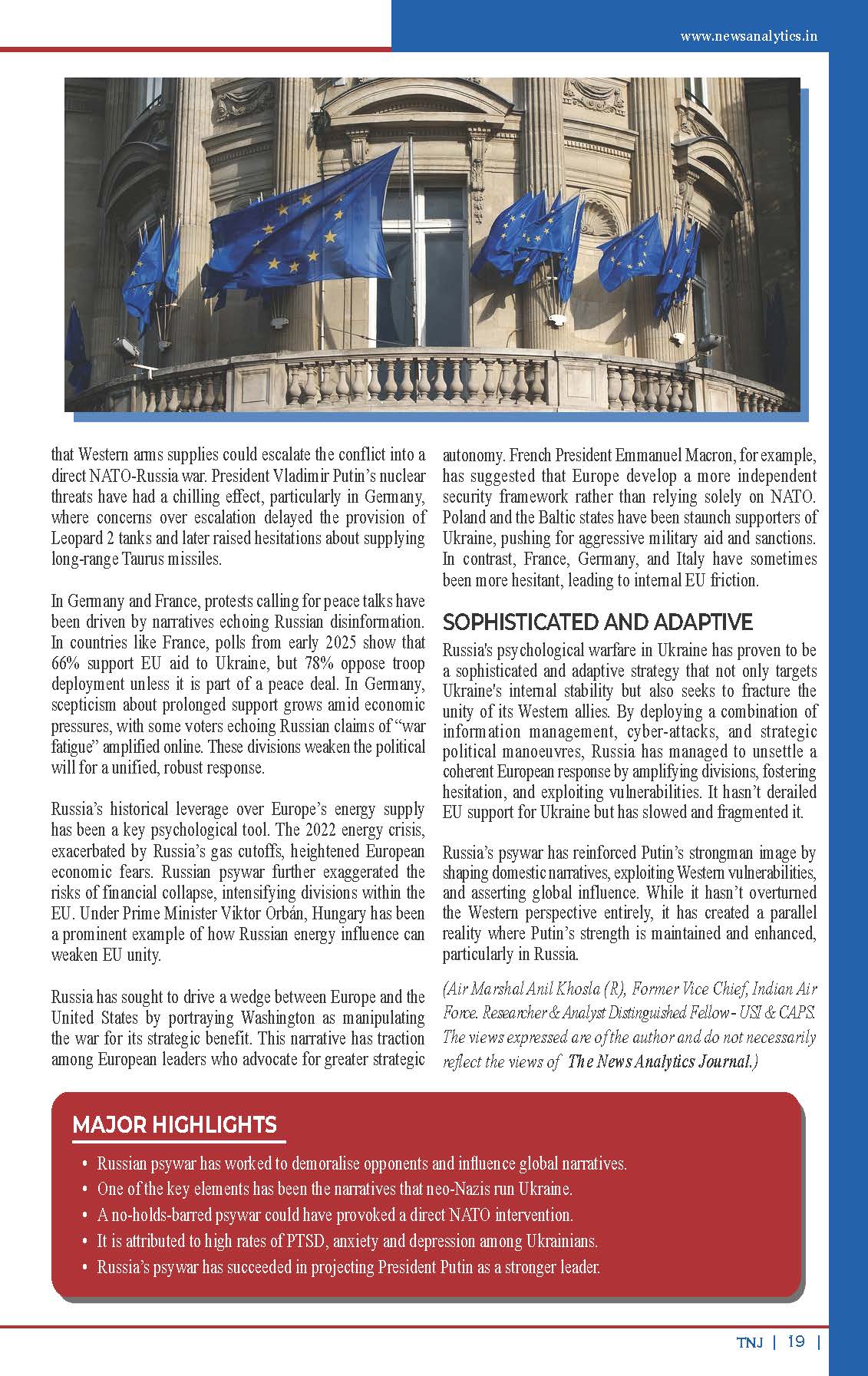
Conclusion
Russia’s psychological warfare in Ukraine has proven to be a sophisticated and adaptive strategy that not only targets Ukraine’s internal stability but also seeks to fracture the unity of its Western allies. By deploying a combination of information management, cyber-attacks, and strategic political manoeuvres, Russia has managed to unsettle a coherent European response by amplifying divisions, fostering hesitation, and exploiting vulnerabilities. It hasn’t derailed EU support for Ukraine but has slowed and fragmented it.
Russia’s psywar has reinforced Putin’s strongman image by shaping domestic narratives, exploiting Western vulnerabilities, and asserting global influence. While it hasn’t overturned the Western perspective entirely, it has created a parallel reality where Putin’s strength is maintained and enhanced, particularly among Russian and non-Western audiences. Whether this perception holds as the war evolves remains uncertain, but for now, Russia’s psywar has undeniably kept Putin’s strongman myth alive and potent.
Please Do Comment.
For regular updates, please register your email here:-
References and credits
To all the online sites and channels.
Pics Courtesy: Internet
Disclaimer:
Information and data included in the blog are for educational & non-commercial purposes only and have been carefully adapted, excerpted, or edited from reliable and accurate sources. All copyrighted material belongs to respective owners and is provided only for wider dissemination.
References:-
- Thomas, Timothy. 2021. “Russian Military Thought: Concepts of Psychological Operations.” Journal of Slavic Military Studies 34 (1): 1-24.
- NATO Strategic Communications Centre of Excellence. 2022. “Russia’s Grand Strategy in the Information Space.” Riga: NATO StratCom COE.
- RAND Corporation. 2021. “Russian Information Warfare: The Role of Narrative and Propaganda.” Santa Monica, CA: RAND Corporation.
- European Council on Foreign Relations. 2022. “The Kremlin’s Playbook: Russia’s Information Operations in Europe.”
- Carnegie Europe. 2022. “Why Europe is Struggling to Counter Russian Information Warfare.” Brussels: Carnegie Europe.
- European Union External Action Service (EEAS). 2023. “Russia’s Disinformation Ecosystem and its Impact on Europe.”
- Chatham House. 2023. “Putin’s Strongman Image and the Role of Propaganda.” London: Chatham House.
- The Atlantic Council. 2023. “The Resilience of Putin’s Popularity Amid Western Sanctions.” Washington, D.C.: The Atlantic Council.
- The Wilson Center. 2022. “How Putin Weaponises Weakness Perception.” Washington, D.C.: The Wilson Center.
- Harding, Luke. 2023. Invasion: Russia’s Bloody War and Ukraine’s Fight for Survival. London: Guardian Faber.
- Kofman, Michael, and Rob Lee. 2024. “Assessing Ukraine’s Strategy Amidst Western Uncertainty.” War on the Rocks, February 10, 2024.
- The Guardian. 2024. “EU Divided Over Continued Support for Ukraine.” March 2024.
- NATO Strategic Communications Centre of Excellence. Reports on Russian Information Warfare. Accessed March 2024.
- Brookings Institution. 2023. “The West’s Cognitive Dissonance on Russia: A Strategic Weakness.” Washington, D.C.: Brookings Institution.

